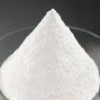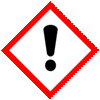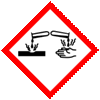Search for the supplies that you need here:
DMF Support and Documentations Available | |
 WHO-GMP Certified Good Manufacturing Practice Certified by World Health Organization |  WC, Written Confirmation for Active Substance to be imported into European Union (EU). |
Glutaric Anhydride or Colloidal Anhydride or Pentanedioic Anhydride or Tetrahydropyran-2,6-Bione SDS of Manufacturers
Anmol Chemicals is a manufacturer supplier exporter of Glutaric Anhydride or Colloidal Anhydride or Pentanedioic Anhydride or Tetrahydropyran-2,6-Bione and it offers materials as per IP BP EP Ph Eur USP NF JP FCC Food Grade as per the the latest monograph at best prices. Anmol Chemicals Group, established in 1976, is the pioneer manufacturer of Specialty Chemicals, Pharmaceutical Excipients, Some API, Food Chemicals in India. Anmol Chemicals Group has manufacturing facilities spread across Western India, representatives in Houston, Chicago USA and Dubai, UAE. We also have toll manufacturing units for processing chemicals in a few countries around the world. We make IP, BP, EP, USP, NF, Ph. Eur., JP, FCC or Food Grade, Analytical Reagent Grade, LR or Laboratory Reagent Grades and Pure Grades of various chemicals. All our items are analyzed to meet the required standards. We can supply the product in grams for your laboratory trial and in tons for your plant scale jobs.
We manufacture Bulk Drugs / API, Excipients, Pharmaceuticals (IP BP USP NF Ph Eur EP JP), Specialty Chemicals (Pure/Reagent), Mineral Fortifiers (FCC). Our manufacturing facility is FDA approved and GLP, cGMP, ISO9001, ISO14001, ISO/IEC 17025, ISO22000, FSSC 22000, ISO45001, FSSAI, Kosher, HALAL, COPP, WHO-GMP certified and Written Confirmation (WC) is available. Solid materials can be customized for particle size, shape, and bulk density. We observe WHO Good Manufacturing Practices and Good Laboratory Practices. We are a government-recognized STAR Export House and "Authorised Economic Operator (AEO)" per Indian Customs.
All technical documents and DMF support available.

Synonyms: Glutaric Anhydride or Colloidal Anhydride or Pentanedioic Anhydride or Tetrahydropyran-2,6-Bione
CAS Number: 108-55-4, Molecular Weight: 114.10, Chemical Formula: C5H6O3, EINECS EC Number: 203-593-6, FEMA: ----,
Glutaric Anhydride or Colloidal Anhydride or Pentanedioic Anhydride or Tetrahydropyran-2,6-Bione SDS, Safety Data Sheet
MSDS Sheet, Material Safety Data Sheet 04-Oct-23
1. PRODUCT AND COMPANY IDENTIFICATION
Product Name & Other Names: Glutaric Anhydride or Colloidal Anhydride or Pentanedioic Anhydride or Tetrahydropyran-2,6-Bione.
CAS Number: 108-55-4
EINECS Number: 203-593-6
Molecular Weight: 114.10
Molecular Formula: C5H6O3
Relevant uses and uses advised against (if any): Industrial Manufacturing.
Suppliers: As per letterhead.
2. HAZARDS IDENTIFICATION
GHS, Globally Harmonized System Classification in accordance with 29 CFR 19
Acute toxicity, oral Category 4, H302
Skin corrosion/irritation Category 2, H315
Serious eye damage/eye irritation Category 1, H318
Labelling according to Regulation (EC) No 1272/2008
GHS Label Elements  Irritant |
GHS Label Elements  Corrosive |
Signal Words: Danger
Hazard Statements:
H302 Harmful if swallowed.
H315 Causes skin irritation.
H318 Causes serious eye damage.
Precautionary Statements:
P210: Keep away from heat/sparks/open flames/hot surfaces – No smoking.
P261: Avoid breathing dust/fume/gas/mist/vapors/spray.
P264: Wash --- thoroughly after handling.
P270: Do not eat, drink, or smoke when using this product.
P273: Avoid release to the environment.
P280: Wear protective gloves/protective clothing/eye protection/face protection.
P285: In case of inadequate ventilation wear respiratory protection.
P301+312: IF SWALLOWED: Call a POISON CENTER or doctor/physician if you feel unwell. P302+352: IF ON SKIN: Wash with soap and water.
P332+313: If skin irritation occurs: Get medical advice/attention.
P304+341: IF INHALED: If breathing is difficult, remove victim to fresh air and keep at rest in a position comfortable for breathing.
P305+351+338: IF IN EYES: Rinse cautiously with water for several minutes. Remove contact lenses if present and easy to do – continue rinsing.
P337+313: If eye irritation persists get medical advice/attention.
P330: Rinse mouth.
P403+235: Store in a well-ventilated place. Keep cool.
Classification according to EU Directives 67/548/EEC or 1999/45/EC:
Hazard Symbols:
Xi = Irritant
Xn = Harmful
Risk Phrases:
R22 Harmful if swallowed.
R36 Irritating to skin.
R41 Risk of serious damage to eyes.
3. COMPOSITION / INFORMATION ON INGREDIENTS
Product Name & Other Names: Glutaric Anhydride or Colloidal Anhydride or Pentanedioic Anhydride or Tetrahydropyran-2,6-Bione.
CAS Number: 108-55-4
EINECS Number: 203-593-6
4. FIRST-AID MEASURES
Always seek medical attention after first aid measures are provided.
Eye Contact: - Rinse immediately with plenty of water for 10 minutes at least. Contact a physician if symptoms persist.
Skin Contact: Wash thoroughly with soap and water; flush with plenty of water. Take off spoilt clothes. Contact physician if symptoms persist.
Ingestion: Wash the mouth with water; seek medical advice immediately.
Inhalation: Remove from exposure site to fresh air and keep at rest. Obtain medical advice.
5. FIRE-FIGHTING MEASURES
Extinguishing Media Recommended: CO2, foam, dry chemicals.
Non-Recommended: Do not use direct water jet on burning material.
Extinguishing Procedure: Closed containers may build up pressure at elevated temperatures. If possible, containers should be cooled with a water spray.
Special Information: In the event of a fire, wear full protective clothing and NIOSH-approved self-contained breathing apparatus with full face piece operated in the pressure demand or other positive pressure mode. At high temperatures under fire conditions, it may produce toxic or irritating fumes. Fire-extinguishing work is done from the windward and a suitable fire-extinguishing method according to the surrounding situation is used. Uninvolved persons should evacuate to a safe place.
6. ACCIDENTAL RELEASE MEASURES
Personal precautions, protective equipment, and emergency procedures: Ventilate area of leak or spill. Avoid breathing dust/fumes/gas/mist/vapors/spray. Use individual protective equipment (waterproof boots, suitable protective clothing, safety glasses, etc.). Restrict unprotected personnel from the area. Prevent any contact with hot surfaces. Do not approach facing the wind. Do not touch the spilled material.
Environmental precautions: Do not let the product enter drains, soil, or water sources.
Methods and materials used for containment cleanup procedures and Storage: Contain spilled material. Cover with an inert, non-combustible absorbent material, (e.g., sand, earth, diatomaceous earth, vermiculite). Vacuum or sweep-up and remove to an approved disposal container. Avoid open flames or other sources of ignition.
7. HANDLING AND STORAGE
Precautions for safe handling: Apply according to good manufacturing and industrial hygiene practices. Ensure proper ventilation. Wash thoroughly after handling. Do not drink, eat, or smoke while handling. Avoid contact with skin, eyes, and clothing. Minimize dust generation. Avoid breathing dust/fumes/gas/mist/vapors/spray. Keep container tightly closed. Avoid ingestion and inhalation. Use individual protective equipment (waterproof boots, suitable protective clothing, safety glasses, etc.). Prevent any contact with hot surfaces. Moisture sensitive.
Conditions for safe storage, including any incompatibilities: Store in cool, dry, and ventilated area away from heat sources and protected from sunlight in tightly closed original container. Keep air contact to a minimum. Store protected from heat, sparks and ignition sources and incompatible materials. Avoid contact with skin and eyes. Avoid inhalation of dust/mist/vapor. Do not store with incompatible materials like strong oxidizing agents and strong acids, alkali, or reducing agents. Keep air contact to a minimum. Storage: 8C to 25C (Cool & dry area).
8. EXPOSURE CONTROL
Exposure Control Measures: This product does not contain any hazardous materials with occupational exposure limits established by the region-specific regulatory bodies.
Respiratory Protection: Avoid to breath directly on the product. Apply local ventilations when appropriate.
Ventilation System: A system of local and/or general exhaust is recommended to keep employee exposures as low as possible. Local exhaust ventilation is generally preferred because it can control the emissions of the contaminant at its source, preventing dispersion of it into the general work area.
Personal Respirators (NIOSH Approved): For conditions of use where exposure to dust or mist is apparent and engineering controls are not feasible, a particulate respirator may be worn. For emergencies or instances where the exposure levels are not known, use a full-face positive-pressure, air-supplied respirator.
Skin Protection: Wear protective gloves and clean body-covering clothing.
Eye Protection: Use chemical safety goggles and/or full-face shield where dusting or splashing of solutions is possible. Maintain eye wash fountain and quick-drench facilities in work area.
Other Control Measures: Maintain good housekeeping in work area. Handle in accordance with good industrial hygiene and safety practice. Wash hands after handling.
9. PHYSICAL AND CHEMICAL PROPERTIES
Appearance: White to off - white crystalline compound / flakes.
Odor: Not available.
Odor threshold: Not available.
pH: Not available.
Relative density: about 1.24
Boiling Point (C): 287C.
Melting Point (C): 55C to 57C.
Flash point: 120.9C..
Auto-ignition temperature: Not available.
Decomposition temperature: Not available.
Upper/lower flammability or explosive limits: Not available.
Vapor pressure: Not available.
Vapor density: Not available.
Evaporation rate: Not available.
Flammability (solid, gas): Not available.
Partition coefficient: n-octanol/water: Not available.
Solubility(ies): Not available.
Viscosity: Not available.
Molecular Weight: 114.10
Molecular Formula: C5H6O3
10. STABILITY AND REACTIVITY
Reactivity: Presents no significant reactivity hazards. Avoid contact with strong acids, alkali, or oxidizing agents.
Decomposition: Carbon monoxide and fumes of unidentified organic compounds may be formed during combustion.
Conditions to Avoid: Heat, spark, flame, direct sunlight, strong acids, alkali, oxidizing agents, reducing agents.
11. TOXICOLOGICAL INFORMATION
LD 50 ORAL/RAT (mg/Kg): 540
LD 50 DERMAL/RABBIT (mg/Kg) - 5955
Carcinogenicity: No component of this product present at levels greater than or equal to 0.1% is identified as probable, possible or confirmed human carcinogen by IARC, ACGIH, OSHA and NTP.
Mutagenic Effects: Not available.
Teratogenic Effects: Not available.
Developmental Toxicity: Not available.
Reproductive Effects: No information available.
12. ECOLOGICAL INFORMATION
Toxicity to fish: No information available.
Persistence and Degradability: No information available.
Mobility: No information available.
Bioaccumulation/ Accumulation: No information available.
Results of PBT and vPvB assessment: No data available for assessment.
13. DISPOSAL CONSIDERATIONS
In accordance with local environmental laws. Avoid disposing into drainage systems and into the environment.
14. TRANSPORT REGULATIONS
DOT USA, TDG Canada & ADR/RID Europe: Not regulated.
IMDG/IMO: Not regulated.
IATA: Not regulated.
15. REGULATORY INFORMATION
SARA 311/312 Hazards: Acute and Chronic Health Hazard. See section 2.
California Prop. 65 Components: This product does not contain any chemicals known to State of California to cause cancer, birth defects, or any other reproductive harm.
Section 16 - Additional Information
European Labeling in Accordance with EC Directives:
H302 Harmful if swallowed.
H315 Causes skin irritation.
H318 Causes serious eye damage.
Classification according to EU Directives 67/548/EEC or 1999/45/EC:
Hazard Symbols:
Xi = Irritant
Xn = Harmful
Risk Phrases:
R22 Harmful if swallowed.
R36 Irritating to skin.
R41 Risk of serious damage to eyes.



Manufacturer Supplier Exporter
ANMOL CHEMICALS Private Limited
Representatives in Houston, Chicago and New York, USA
TEL: (OFF) +91 22 23726950, +91 22 23774610, +91 22 23723564
Taloja Navi Mumbai, Banglore, INDIA
e-mail: info@anmol.org
Copyright and Usual Disclaimer is Applicable
Last updated 15-oct-25
Exporters to USA, Canada, UAE, Kuwait, Qatar, Gautemala, Tunisia, Europe, South Africa, Bangladesh, Sri Lanka, Tanzania, Kenya, Egypt, Iraq, Turkey, Israel, Vietnam, Nigeria, Uganda, Brazil, Chile, Argentina, Dubai, UAE, Saudi Arabia, Cameroon, Mexico, Brazil, Chile, Argentina, Korea, Thailand, Malaysia, Indonesia, Jakarta, Australia, China, Germany, France, etc.
Representatives in New York, Houston - Texas, Chicago - Illinois, Los Angeles.
All products are Sold for Industrial and Laboratory Use only.
Fast Selling IP BP Ph Eur EP USP NF JP Analytical Reagent FCC Food Grades of Chemicals by Anmol Chemicals
Ammonium Persulfate --- Acetic Acid Glacial --- Aluminum Chloride --- Ammonium bicarbonate --- Benzyl Alcohol --- Butylated Hydroxyanisole --- Butylated Hydroxytoluene --- Boric Acid --- Calcium Butyrate --- Calcium Chloride --- Calcium Hydroxide --- Calcium Lactobionate --- Calcium Saccharate --- Carbamide Peroxide --- Calcium Oxide --- Calcium Sulfate --- Chromic Chloride --- Fumaric Acid --- Magnesium Butyrate --- Magnesium Chloride --- Magnesium Sulfate --- Malic Acid --- Maleic Acid --- Manganese Chloride --- Manganese Sulfate --- Octyldodecanol --- Oleic acid --- Phenylethyl Alcohol --- Propylene Carbonate --- Potassium Hydroxide Pellets --- Potassium Alum --- Selenious Acid --- Sodium Acetate --- Sodium Bromate --- Sodium Selenite --- Sodium Perborate --- Sodium Hydroxide --- Sodium Sulphate --- Sodium Sulfide --- Sodium Thiosulfate --- Urea --- Zinc Chloride --- Zinc Sulphate ---


















